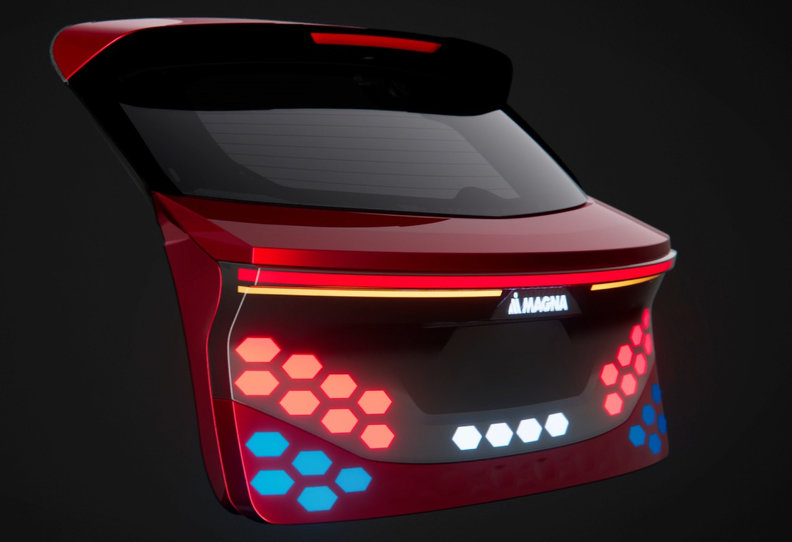
Magna's "Breakthrough Lighting" Litgate
The latest "design freedom" offering from an automotive supplier
Recently I'm seeing something interesting from automotive suppliers: Messaging that boasts about offering "design freedom." REE, the EV platform manufacturer behind (or underneath) the Proxima cargo van, says their P7 deck offers "unlimited design freedom." Now supplier Magna is touting their new Litgate manufacturing technique by saying it, too, "enables increased design freedom."
The Litgate (not a typo) is a thermoplastic liftgate that has all of the lighting—brakes, turn signals, backup lighting, style lighting--concealed behind seemingly opaque panels. They call this "Breakthrough Lighting."


Magna's thinking is that this type of look is what auto designers will use to distinguish the aesthetics of EVs and 'bot-cars: "As the industry [shifts towards] electrified and autonomous vehicles, we expect more desire for developments like this that are seamlessly integrated into exterior surfaces," says Grahame Burrow, Global President of Magna Exteriors.



Here's what it looks like in action:
Enter a caption (optional)
I'm not blown away, but then I'm not an automotive designer. I don't doubt that it will enable some slicker designs, but as a car owner my first thought is, how long will this take to fix if it breaks? I don't mean that cynically, I'm genuinely curious: If something goes wrong, can I pop a panel open on the inside and replace a component myself, or am I looking at an entire afternoon in the waiting room at the dealership? Given the direction car construction is evolving in, I suspect the latter, but I don't really know; Magna's not released any details.
-
oFavorite This
-
Q3Comment
K
{Welcome
Create a Core77 Account
Already have an account? Sign In
By creating a Core77 account you confirm that you accept the Terms of Use
K
Reset Password
Please enter your email and we will send an email to reset your password.


Comments
Turn signals and brake lights shouldn't be confusing. Some cars, especially from the front, its impossible to see the indicators
The BMW i3 gate is similar. there's a little hole where bugs get in and then die behind the glass.
Meh.